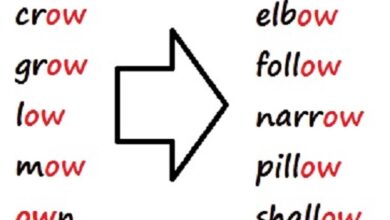Phonology
It is known as phonology to linguistic science that studies the sound of the voice.
Specifically, it is a science that deals with phonemes in relation to the role it plays in a language. The phoneme is the smallest sound unit of the phonological system of a language.
Sounds that fulfill a differentiating function are considered phonemes. Phonemes are represented between two oblique bars: //. In Spanish there are 24 phonemes: 5 vowels and 19 consonants.
The criteria of vowel phonemes are two: the place of articulation and the mode of articulation. By the place of articulation, vowel phonemes are classified into previous vowels “/ i /, / e /”, central “/ a /” and later “/ o /, / u /”. By way of articulation, vowel phonemes are classified as closed vowels “/ i /, / u /”, means “/ e /, / or /” and open / a / “.
Consonant phonemes are classified taking into account the action of the palate veil (oral and nasal), the action of the vocal cords (sound and deaf), the mode of articulation (occlusive, fricative, African), and the place of articulation ( bilabial, labiodental, dental, interdental, alveolar, palatal and velar).
The phoneme, sound model is represented in writing by letters. There is no exact correspondence between phonemes and letters, since different letters can represent a minimum phoneme. Due to these mismatches, the number of phonemes and the number of letters is very similar but not identical. Phonology
In relation to the above, minimum words are those words that mean different things but only differ in one sound. For example: the phoneme is what allows us to distinguish the words “step and case”, just by exchanging the phoneme / p / for the phoneme / k /.
In 1886, The International Phonetic Association created an International Phonetic Alphabet, in which they represented graphic symbols that allow describing the pronunciation of any human language.
Etymologically , the word phonology is of Greek origin “phonos ” which means “sound”; “Logos” that expresses “study”, and the suffix ” -ia” which is synonymous with “quality or action”.
1-Diachronic
Diachronic phonology studies the functional, structural changes and substitutions of the phonic elements of a language throughout history.
This branch of phonology was nominated at the linguist congress in The Hague in 1928 by Jakobson, Karcervsky and Trubetzkoy.
2-Synchronous
Synchronic phonology is responsible for investigating the phonological system of a language at a given time.
3-Generative phonology
Generative phonology has the function of representing the phonemic of language morphemes, and proposing a set of rules that identify the phonetic form of a language.
4-Phonology and phonetics
Phonetics and phonology are two related sciences, the first deals with the study of sounds in speech, and the second studies sounds in the language plane.

